
|   |

|   |
Kathak Kendra visits Pune with the spectacular Phagun Utsav 2023 - Kiran Java email: kiran@kiranjava.com Photos courtesy: Narendra Ghodke March 16, 2023 Kathak Kendra, New Delhi, organized their signature Kathak dance festival, Phagun Utsav 2023 in Pune on 3rd March 2023. The event, presided by Uma Dogra, chairperson, Advisory Board of Kathak Kendra, and Pranaame Bhagawati, Director of Kathak Kendra, was organized in collaboration with the Nandkishore Cultural Society, Bharatiya Vidya Bhavan, and Infosys Foundation. The 'Kathak Kendra Interactive Session with the dance fraternity' hosted by Dr. Nandkishore Kapote at his premises in Nigdi was held on the sidelines of the festival and was well attended. 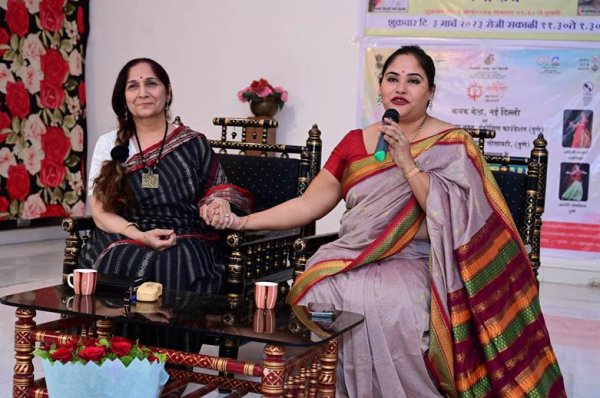 Uma Dogra and Pranaame Bhagawati preside over the Kathak Kendra Interactive Session A series of performances by talented senior Kathak exponents Aditi Panse from Nasik, Sarita Kalele from Mumbai, Sharvari Jamenis from Pune, and Gauri Diwaker from Delhi lit up the stage in Pune. 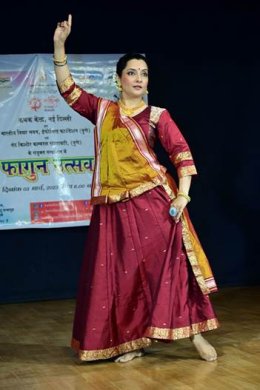 Aditi Panse  Sarita Kalele The show was opened by Aditi Panse who presented the intra forms of Kathak including Thaat, Amad, and Tode in Taal Ektaal, marked by crisp footwork and neat gait. She gracefully presented a traditional Chakradhar Paran (forceful composition with bols of the pakhawaj), a vision created by her mother and guru Rekha Nadgauda who had learned it from Gopi Krishna (1935 - 1994), doyen of the Banaras gharana. Aditi closed with an exquisitely performed Hori of Radha and Krishna, where Krishna insisted on playing Hori on a day that was not the Holi 'khel' day. The awe-inspiring abhinaya highlighted Radha's attempts to thwart Krishna's plans and how Krishna succeeds in the end. The next performance was by Sarita Kalele, a disciple of Uma Dogra, who opened with Shiv Vandana in raag Bageshree. Her repertoire included presentations in Chautaal and Pancham Sawari where she performed some exquisite footwork compositions, visibly approaching the sam, with technical precision. She regaled the audience with compositions from the traditional repertoire of the Pt. Durgalal tradition. She closed with a charming performance on a Hori titled "Na maro Shyam pichakari" considered the piece de resistance that kept the audience engaged. This breathtaking choreography was taught to her by her Guru Uma Dogra around 17 years ago. 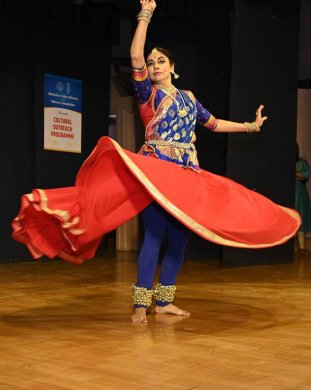 Sharvari Jamenis The third performance was by Sharvari Jamenis, a prime disciple of Dr. Rohini Bhate, who delivered a spectacular and diverse repertoire. She began with a graceful ode to Lord Krishna. Her repertoire included a traditional Paran-Amad (whose rhythmic patterns were taught to her by tabla wizard Suresh Talwalkar), a spectacular composition of natawari bol (rhythmic textual syllables of ta thei tat and its derivatives), and a Shiv paran (an inter-play of forceful and gentle movements on a rhythmic composition ending on the outer edge of the sam), a composition by Chhatrapati Maharaj. Her padhant (recitation of rhythmic syllables of dance in Kathak) in particular mesmerized the audience. Sharvari used stage space creatively by employing movement across and sideways with circles and diagonal lines. She enchanted the audience with Chaitanya Kunte's Hori composition which she began with a 'gat bhav' before taking on a soulful portrayal of the Hori 'khel' episode. Her calm spirit, grace, and precise movements charmed the audience. A talented and expressive dancer, emoting beautifully on stage, she set the stage on fire. She is grateful to have learned from a Guru who contributed to glorifying the beauty of Kathak, carved her own style of Kathak in Pune, and created and taught her own compositions that beautifully reflected her own style. 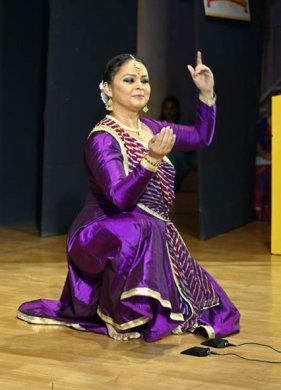 Gauri Diwaker The closing performance was by Gauri Diwaker who intelligently executed her elegant pieces, be it the Ganesh Vandana learned from Aditi Mangaldas or the energetic performance of other intra forms of Thaat, Amad etc. learned from Jaikishan Maharaj. Gauri moved beyond the traditional mythological plot of Hori to deliver a great emotional experience. She demonstrated wonderful abhinaya on "Naino ke dore gulaal bhare," a composition written by Suryakant Tripathi 'Nirala'. This was specially choreographed for Gauri by Aditi Mangaldas about 14 years ago. At that time they had requested Mannu Bhandari to explain the intricate lyrics to them. Interchanging from a state of stillness to a burst of graceful movement, Gauri used her forte in rhythm to build a powerful presence on stage, generating several calls of an encore from a delighted audience. The event was an incredible curation of performances by Kathak Kendra, New Delhi, that held the Pune audience spellbound. The fact that the audience members repeatedly called for an encore portrays the success of Kathak Kendra's maiden venture in Pune city. 'Kathak Kendra Interactive Session with the dance fraternity', a special event held by Kathak Kendra in Pune on the morning of the event day was well attended by eminent Gurus, senior Kathak exponents, and upcoming talent. Uma Dogra and Pranaame Bhagawati emphasized their eagerness to meet with young artistes from all corners of the country. This was their maiden trip to connect with young minds and strengthen their relationship. They assured the attendees that all their concerns and suggestions would be heard and addressed, and humbly invited proposals from the fraternity. Uma Dogra shared a mantra with the youngsters that an artiste blossoms in the true sense only with a cross-cultural outlook; when the artiste learns about other art forms and practices a focused knowledge-sharing with other dancers. 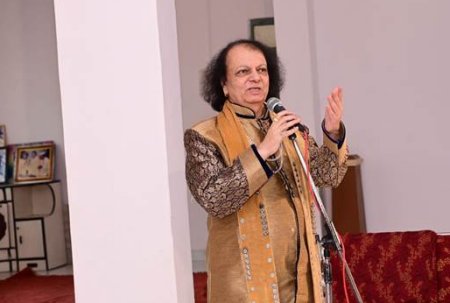 Dr. Nandkishore Kapote, Director, Nandkishore Cultural Society Dr. Nandkishore Kapote was incredibly delighted to host Kathak Kendra and support their quest to cut boundaries and reach out to artistes in Maharashtra. Kathak Kendra is his alma mater and he was grateful that due to Kathak Kendra he received the opportunity to train under his Guru Pt. Birju Maharaj. He took this event as an opportunity to serve the institution that had played an essential role in his life. Uma Dogra shared that Kathak Kendra has planned to hold a series of workshops on health and well-being, interaction with musicians, shows, and festivals where artistes from all over India will be invited to perform. She shared that they have contacted the Ministry of Culture and ICCR to strengthen their archives and research section which will be available to all Kathak students. Pranaame Bhagawati added that Kathak Kendra has planned to connect with the fraternity through social media as well as hold tours for visitors to Kathak Kendra. Then the floor was open for suggestions and discussion by the dance fraternity of Pune district. 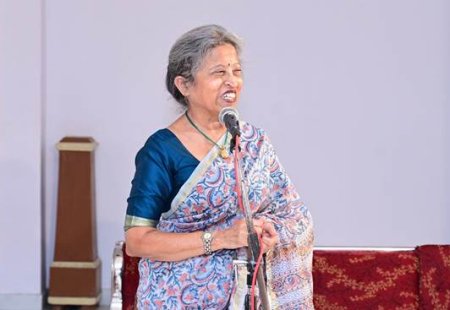 Shama Bhate, Director, Nadroop Shama Bhate spoke about the upcoming centenary celebrations of Dr. Rohini Bhate that begin this November. Uma Dogra responded that Kathak Kendra too would be keen to hold a festival as part of the celebrations. She said that as time passed, Kathak classical dance gained regional traction and that Dr. Rohini Bhate was a role model and her contributions to Kathak dance were exemplary. She herself created many compositions, developed the dance form, and created many students in Maharashtra. Kathak exponent Astha Godbole-Karlekar proposed a collaboration to put together a seminar dedicated to the work of Lachhu Maharaj, the doyen of the Lucknow Gharana in Kathak. The proposed seminar would delve into the many different aspects and dimensions of Maharaj's work, providing a platform to explore his unique approach to Kathak and its lasting impact on the art form. The seminar would also offer an opportunity for Kathak artistes and enthusiasts to come together and celebrate Maharaj's legacy while deepening their understanding of his rich contributions. Kathak Kendra was pleased with this suggestion.  Astha Godbole-Karlekar 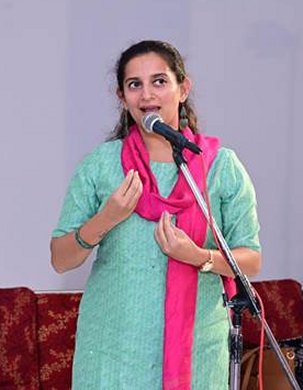 Ameera Patankar Young Kathak exponent Ameera Patankar suggested holding seminars with topics that addressed the concerns of youth dancers, such as changing aesthetics for the modern world, harnessing the power of social media, and seeking solo performance opportunities. Ameera Patankar emphasized the need for such initiatives to be taken up to ensure that young dancers and artistes have a voice and can work together to promote and protect their art. Her proposal was met with great enthusiasm by Kathak Kendra. Sheetal Kolvalkar recited a Kavitt (rhythmic poetic composition) that she had composed herself. Uma Dogra expressed her appreciation for Sheetal's work and suggested that it be published in the upcoming newsletter of the Kathak Kendra. Part of the new initiatives of Kathak Kendra is the publishing of a newsletter that features articles, interviews, and other information related to Kathak and its practitioners. The inclusion of Sheetal's Kavitt in the newsletter would provide a platform for her work to reach a wider audience and help promote her as a talented and creative artiste. 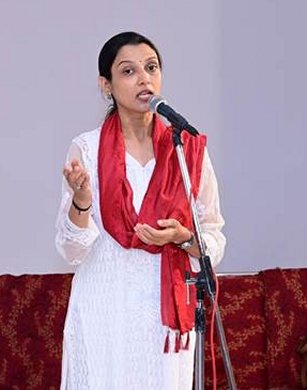 Sheetal Kolvalkar reciting a Kavitt 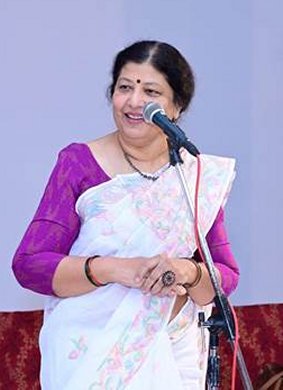 Neelima Adhye 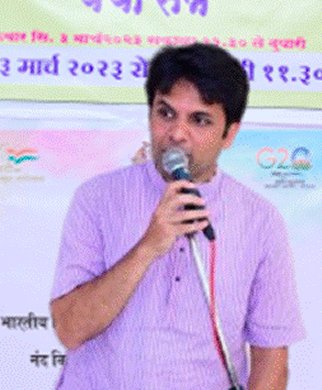 Dr. Parimal Phadke Senior Kathak exponent Neelima Adhye echoed everyone's sentiment when she said that it sounded so unbelievable that the fraternity could contact Kathak Kendra and that all voices will be heard regardless. She highly appreciated Kathak Kendra's efforts in this direction and hoped that it would lead to a positive change in the Kathak community. She also mentioned that having a platform like Kathak Kendra where artistes could voice their opinions and concerns would go a long way in promoting the art form and addressing any issues that arise within the community. Dr. Parimal Phadke, Bharatanatyam dancer and assistant professor at Savitribai Phule Pune University welcomed the initiatives of Kathak Kendra. He said that as an educational institution, it would be a pleasure to collaborate with Kathak Kendra in their initiatives such as workshops and seminars. He emphasized the importance of promoting cross-cultural exchange and learning from each other's traditions. Dr. Phadke's positive response highlights the potential for collaboration and cooperation between institutions and individuals to promote traditional art forms and cultural diversity. 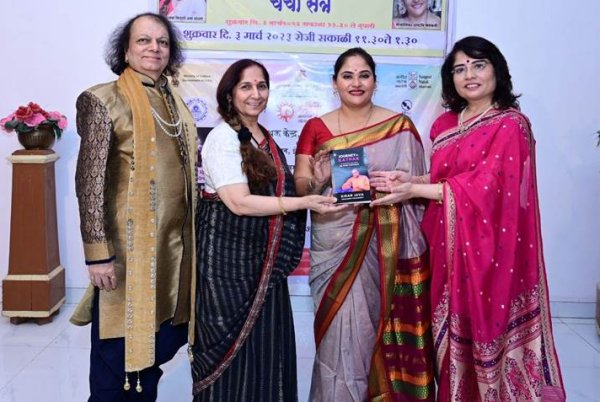 From left to right: Dr. Nandkishore Kapote, Uma Dogra, Pranaame Bhagawati, and Kiran Java At the close of the session, this author presented her book titled 'Journey of Kathak Part 1: In conversation with Dr. Puru Dadheech' to Kathak Kendra which was graciously accepted by Uma Dogra and Pranaame Bhagawati for inclusion in the Kathak Kendra library records. At the session, the Kathak Kendra representatives actively encouraged artistes to submit their books or written work to the library, as well as to consider submitting their work for publication in the organization's newsletters and blogs creating a space for critical reflection and engagement. 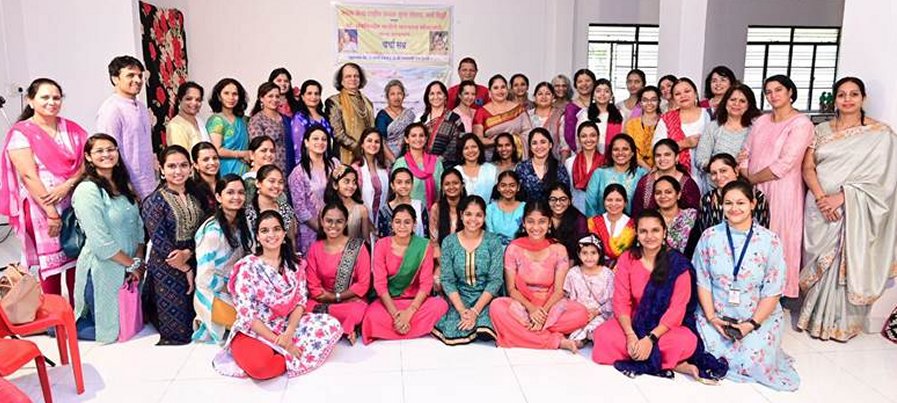 The dance fraternity's unanimous applause for Kathak Kendra, Uma Dogra, and Pranaame Bhagawati is a testament to their valiant efforts in creating new connections and strengthening old ones. They were congratulated on their attempt to make the National Institute of Kathak Dance truly national by reaching out to all corners of India. Uma Dogra's call to extend the efforts of the fraternity beyond national boundaries and form connections worldwide and internationally is a vital step towards promoting our rich cultural heritage on a global platform. It is essential to work together to ensure that the art form continues to thrive and evolve at a global level.
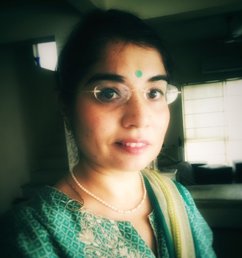 Kiran Java is the author of 'Journey of Kathak' and 'Meeting the Kathak Rishi'. She holds a Masters degree in Journalism and Communication and a Bachelor's degree in Marketing from Eastern Connecticut State University, USA. She holds a Diploma in Natyashastra - Kathak relevancy under Dr. Puru Dadheech and certification in Vallabh Vedanta from Mumbai University. For more information visit kiranjava.com |